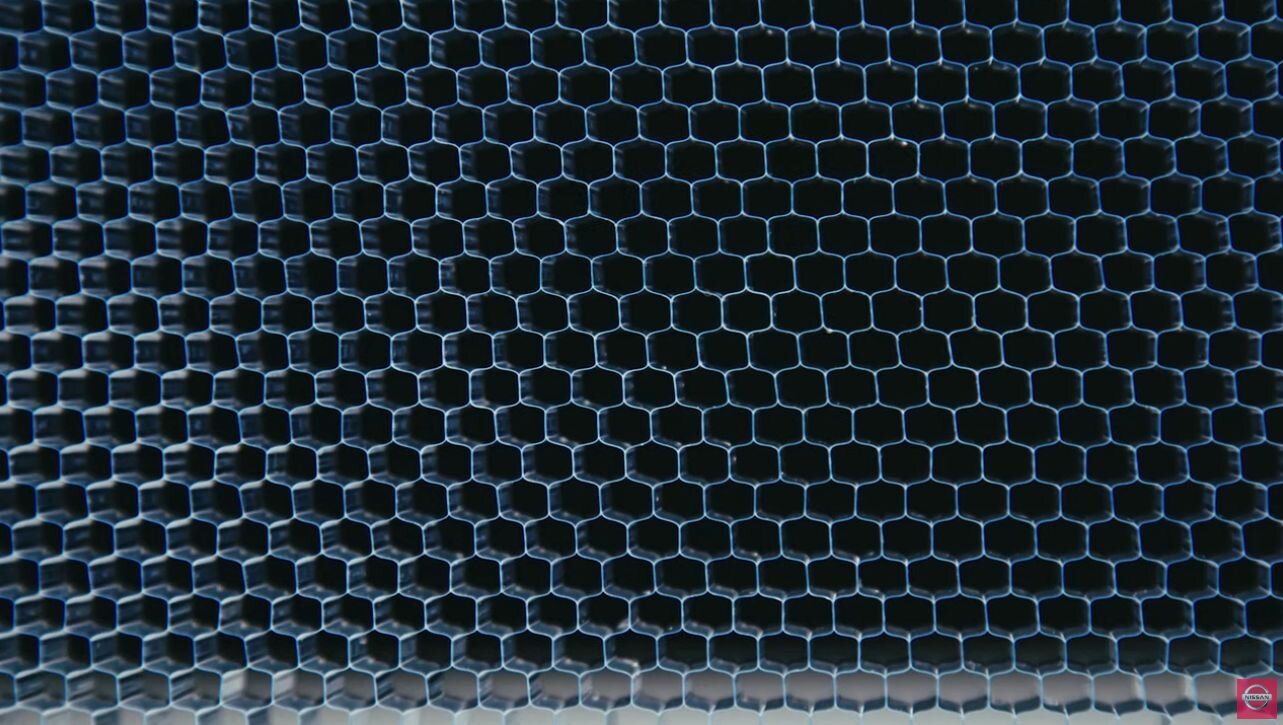
Nissan drew interest this week at CES with its announcement of an acoustic meta-material to reduce road noise in electric vehicles.
Nissan, which launched the LEAF in 2010 and prides itself as a significant EV pioneer, has been exploring future possibilities in noise insulation for years.
With any type of vehicle, you hear road noise when you drive.
Kyle Hyatt in Roadshow said, "Noise vibration and harshness—aka NVH—has been the bane of car engineers for decades. It's made up of a combination of sounds and sensations from a vehicle's drivetrain as well as road noise and ambient noise (such as city sounds), and getting rid of it is tough."
And in electric vehicles, getting rid of it may seem tougher.
The glitch with EVs is that they have no engine sounds so they are quieter. Great, right? Not really. That makes the noise of the road all the more distinct.
"In an electric car, that job is made even tougher because the vehicle's noise floor is much lower," he said. "A 'noise floor' is the sum total of all the unwanted sounds that you have to overcome to measure a specific sound. An example would be that you're trying to have a conversation at a rock concert and your friend can't hear you because the combination of the music and all the other people talking has raised the noise floor of the room."
Nissan has met the challenge; a recent video shows how, in looking at the potential of innovative materials for sound insulation.
In the video, Susumu Miura, advanced materials engineer, talked about their discovery called "acoustic meta-material." He noted its structure. A lattice pattern is covered with a thin plastic film. "When noise hits the material, the material bounces it back." That reduces noise passing through the material.
Nissan's material is a departure from a traditional use of heavy rubber boards to reduce noise. (Engineers have had to get creative in ways they try to dampen vibrations coming through a vehicle's tires and into the cabin, and most use a combination of heavy rubber and fiber mats under the car's carpets, said Roadshow. "Nissan's engineers are moving away from the use of traditional sound deadeners and into a more lightweight future." )
Compare that with Nissan's new material, which weighs one fourth as much yet provides the same degree of sound isolation.
Being lightweight yet offering "outstanding quietness," said Miura, is what makes this a breakthrough.
Shane McGlaun, SlashGear: That combination of lattice structure and plastic film controls air vibrations "to limit the transmission of a wide range of band noise in the 500 to 1,200 hertz range."
Darren Quick in New Atlas wrote about the design as looking "a bit like bubble wrap with one side removed."
Sound-deadening materials have been developed before Nissan's attempt but, said Hyatt, the Nissan solution is interesting in that "it uses two layers of lightweight plastic with a honeycomblike lattice in between them."
Hyatt wrote that "This structure uses air to essentially trap the relatively low-frequency vibrations (500Hz to 1,200Hz) that road noise is made of."
McGlaun told readers how Nissan developed the concept and what triggered their research interest in the meta-material:
Research began back in 2008. "At the time meta-material was used in high-sensitivity antennas used for electromagnetic wave research. Nissan worked to extend the applicability of the material to include sound waves leading to the invention of the acoustic meta-material."
The material was on display at CES 2020 but there was at the time of this writing no information on when the material would go into production or find its way into vehicles, according to reports.
A bigger picture view might acknowledge that, for the car industry, the concept of active noise control has been something that engineers have worked on before, using various technology approaches beyond the use of materials.
Last year, Hyundai made news with its noise reduction efforts. Hyundai Motor Group announced the Road Noise Active Noise Control (RANC) system to reduces noise in the vehicle cabin. "Road-noise Active Noise Control (RANC) technology actively reduces noise by emitting soundwaves inverted to incoming noise from roads," said the company.
© 2020 Science X Network
Citation: Nissan takes on EV road noise with lattice trap (2020, January 9) retrieved 9 January 2020 from https://techxplore.com/news/2020-01-nissan-ev-road-noise-lattice.html
This document is subject to copyright. Apart from any fair dealing for the purpose of private study or research, no part may be reproduced without the written permission. The content is provided for information purposes only.
